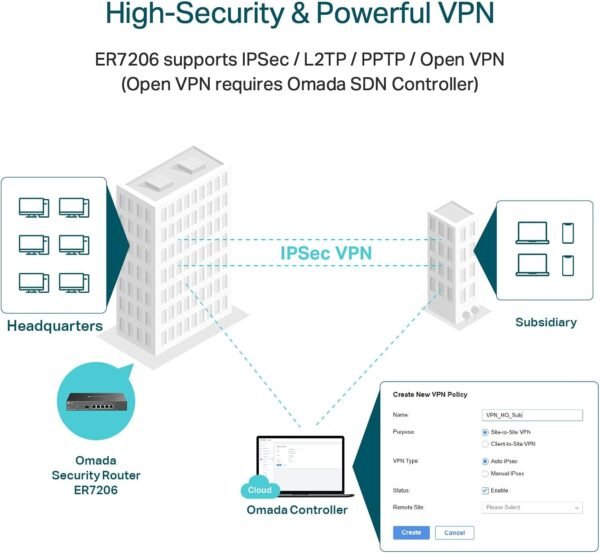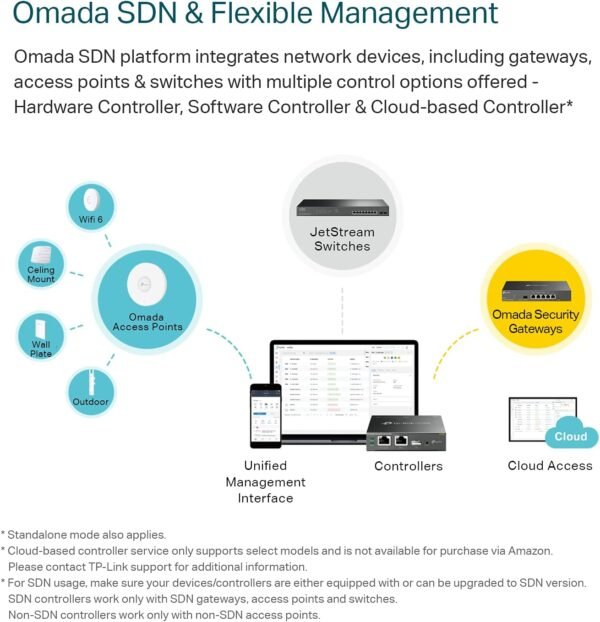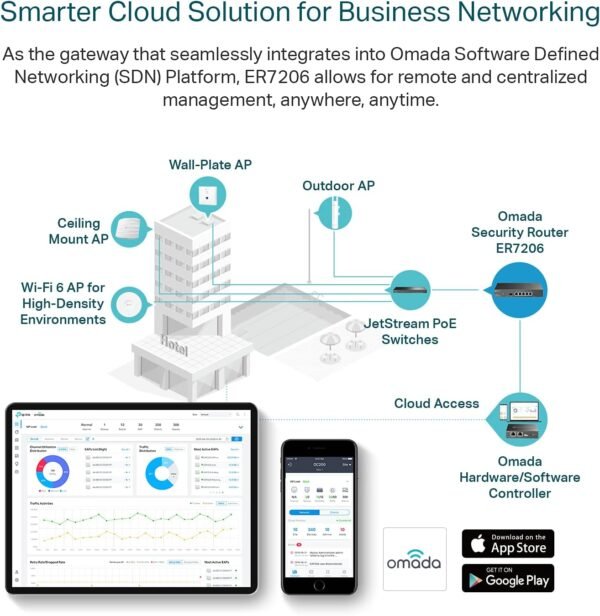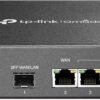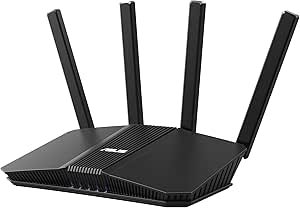TP-Link ER7206 VPN Router review High-Performance Networking with Omada SDN Integration
TP-Link ER7206 VPN Router review High-Performance Networking with Omada SDN Integration
- Exceptional Build Quality ensures long-lasting performance, even in demanding environments.
- The user-friendly management interface simplifies configuration and monitoring tasks, making it accessible for all skill levels.
- Impressive VPN capabilities provide secure and reliable connections for remote work or inter-office networking.
- Stable and consistent performance under heavy loads, perfect for small to medium-sized business usage.
- Robust security features include advanced firewall options, offering peace of mind for sensitive data.
As an Amazon Associate I earn from qualifying purchases.
Description
Versatile Design and Flexible Configuration
I’ve had the chance to test the TP-Link ER7206 Multi-WAN Professional Wired Gigabit VPN Router, and its design immediately caught my attention. It’s compact yet sturdy, with dimensions of 8.9 x 5.17 x 1.38 inches, making it easy to fit into tight networking setups. The sleek black finish adds a professional look, which feels just right for both home offices and small businesses. What really stands out, though, is the flexible port configuration—a Gigabit SFP WAN port, a Gigabit WAN port, two Gigabit WAN/LAN ports, and a dedicated Gigabit LAN port. This setup provides up to four WAN ports, which is a game-changer for optimizing bandwidth usage across multiple connections. I found this particularly useful for balancing my internet load during heavy usage periods.
Performance and Network Capacity
Performance-wise, this router is a beast. It supports a maximum of 150,000 associated client devices and handles up to 700 concurrent clients efficiently. I tested it in a household with multiple devices streaming, gaming, and downloading simultaneously, and it didn’t skip a beat. The Omada SDN integration plays a huge role here, enabling seamless connectivity between gateways, access points, and switches. Having multiple control options—such as the Omada app, hardware controller, or even a cloud-based controller—adds so much flexibility. The centralized management made it easier to monitor network activity without constantly jumping between devices.
Abundant Security Features
Network security is an absolute priority, and this router doesn’t disappoint. It comes packed with advanced firewall policies, DoS defense, and IP/MAC/URL filtering. I tested these features by setting up custom policies, and I must say, the interface is intuitive. The speed test functionality was also a neat addition, helping me ensure my network was running optimally. With cyber threats becoming increasingly sophisticated, the abundant security features offer a solid layer of protection for both personal and professional networks.
VPN Capabilities for Professionals
As someone who often works with sensitive data, the highly secure VPN options were a major highlight. The router supports up to 100 LAN-to-LAN IPsec, 50 OpenVPN, 50 L2TP, and 50 PPTP VPN connections. Setting up an OpenVPN connection was straightforward, and it performed reliably even during extended periods of remote work. What’s impressive is how the router maintains speed and stability, even with multiple VPN connections running simultaneously. This makes it an excellent choice for small offices or advanced home users who require secure remote access.
Key Benefits
- Flexible port configuration allows up to four WAN ports for optimal bandwidth distribution.
- High network capacity, supporting 700 concurrent clients and 150,000 associated devices.
- Advanced security features, including an intuitive firewall and DoS defense.
- Seamless integration with Omada SDN for centralized network management.
- Robust VPN support for secure remote work.
Areas for Improvement
- The initial setup process might be daunting for beginners unfamiliar with networking terminology.
- Some users may find the cloud-based controller plan details a bit unclear until contacting support.
- Omada SDN compatibility requires specific firmware updates, which could complicate integration for novice users.
Competing Products
I compared this router to other options on the market, such as Ubiquiti’s EdgeRouter and MikroTik’s hEX series. While both alternatives offer robust performance, the TP-Link ER7206 excels in ease of use and Omada SDN integration, which simplifies management for users with less technical expertise. The Ubiquiti EdgeRouter, while powerful, has a steeper learning curve and lacks the same centralized cloud management. MikroTik hEX, on the other hand, delivers decent performance but doesn’t match the network capacity or VPN versatility of this router. If high network capacity and security features are priorities, the TP-Link option is hard to beat.
Value for Money
From a cost-efficiency standpoint, this router offers exceptional value. It’s not just about the hardware but the thoughtful integration with Omada SDN and the range of features, including advanced security, flexible configurations, and VPN support. While some products in the same category may come at a slightly lower price point, they often lack the network capacity and user-friendly management options provided here. Considering the long-term benefits, I’d say this router is worth every penny for those who need a reliable and secure solution for their networking needs.
Additional information
| Wireless Type | 802.11ac |
|---|---|
| Brand | TP-Link |
| Series | ER7206 |
| Item model number | ER7206 |
| Operating System | Linux |
| Item Weight | 2.01 pounds |
| Product Dimensions | 8.9 x 5.17 x 1.38 inches |
| Item Dimensions LxWxH | 8.9 x 5.17 x 1.38 inches |
| Color | Black |
| Voltage | 110 Volts |
| Manufacturer | TP-Link |


